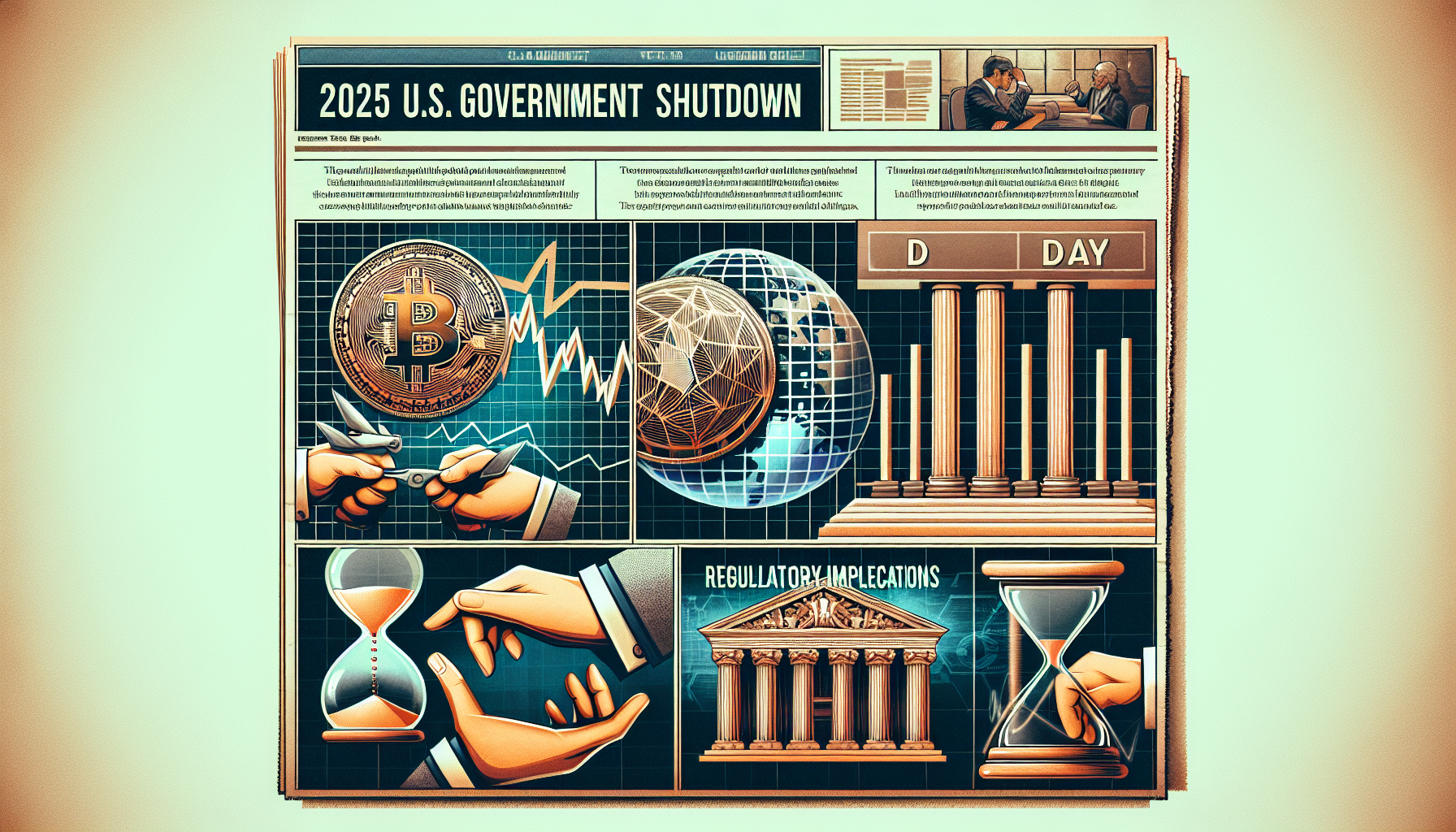The Great American Silence: A Stress Test for Crypto's True Independence
The abrupt halt of the United States federal government on October 1st, 2025, sent ripples across global markets. But for the cryptocurrency ecosystem, it presented a unique and unplanned experiment. With the Securities and Exchange Commission (SEC) operating on a skeleton crew, a pipeline of nearly one hundred crypto-related ETF applications froze in place. Simultaneously, the steady drumbeat of critical economic data from the Bureau of Labor Statistics and the U.S. Census Bureau fell silent. For an industry built on the principles of decentralization and self-sovereignty, this regulatory and data blackout became the ultimate litmus test. The core question emerged: Is the crypto market truly resilient enough to function independently when its traditional oversight and macroeconomic compass suddenly vanish?
A Vacuum of Oversight and Information
The immediate effect of the U.S. shutdown was the creation of a profound informational and regulatory vacuum. This was not merely a pause in creating new rules; it was a halt to the very mechanisms that provide market structure and predictability. Enforcement actions slowed to a crawl, leaving crypto exchanges and projects in a state of suspended animation. For entities with pending applications, the path forward was blocked by bureaucratic inertia, a stark reminder that even the most innovative sectors are not immune to the machinations of traditional government.
The ETF Approval Freeze: Momentum Grinds to a Halt
Perhaps the most visible casualty was the ETF pipeline. These financial instruments represent more than just investment vehicles; they are symbols of institutional validation and mainstream adoption. The delay of spot and futures ETFs for a wide range of digital assets acts as a silent momentum killer. Investors lose patience, and builders lose a critical catalyst for growth. While the pause is a procedural "not yet" rather than a definitive "no," in the high-velocity world of crypto, perception is reality, and silence can be deafening.

Market Reaction: Decoupling from Fundamentals
In the absence of traditional signals, the market was forced to find new anchors. Remarkably, initial metrics showed signs of strength. Bitcoin briefly traded above the $120,000 mark, with daily volumes holding strong between $60 and $70 billion. On the surface, this suggested a mature and resilient market capable of weathering the storm of regulatory silence. Exchanges, aware that their actions would be scrutinized retroactively, largely maintained business-as-usual operations, prioritizing compliance to avoid future repercussions.
The Trader's Dilemma: Leaning into the Chaos
For traders, the shutdown created a unique environment. With no new macro data or regulatory headlines to digest, the market's focus narrowed intensely to price action itself. The fundamental question shifted from "why is the market moving?" to "what is the market doing?" This can create a self-reinforcing feedback loop where price drives sentiment, and sentiment, in turn, drives price. Traders began relying more heavily on alternative data streams:
- On-Chain Analytics: Metrics like wallet activity, exchange flows, and network gas fees gained prominence as real-time indicators of user behavior.
- Social Sentiment: News chatter and social media analysis became a proxy for the missing economic data releases.
- Technical Analysis: Chart patterns and technical indicators became the primary tools for decision-making in the absence of fundamental news.
This shift, while innovative, carries significant risk. On-chain data can show *what* is happening but often fails to reveal *why* or capture the underlying intent and risk. This can lead to misinterpreting the market's true direction.
The Double-Edged Sword of Regulatory Absence
The market's stability during the shutdown is a testament to its growing infrastructure. However, looking deeper reveals a more nuanced and potentially concerning picture. The absence of a watchful regulator can embolden certain participants to test boundaries, increasing leverage and engaging in practices they might avoid under normal scrutiny. This is akin to a stress test for the market's discipline rather than just its infrastructure.

Maturity is What You Do When No One is Watching
The true measure of the crypto market's maturity is not how it behaves under the SEC's gaze, but how it conducts itself when that gaze is averted. A period of minimal oversight can lead to a "leverage creep" and lax risk management. While this might fuel short-term volatility and opportunity for some, it sows the seeds for potential instability when normal operations resume. Regulators, upon their return, will inevitably conduct a retrospective review, and actions taken in the shadows will be brought into the light.
Broader Implications: Stablecoins, Gold, and the Battle for Legitimacy
The shutdown's impact extends beyond Bitcoin and ETFs, affecting other critical areas of the digital asset space. The Fed's cautious opening of payments infrastructure to stablecoin issuers highlights a pivotal moment. While providing a potential pathway for legitimacy, it also draws a clear line between compliant and non-compliant actors. As thought leaders like Arthur Hayes warn, the integration of stablecoins into the traditional banking system could have unforeseen consequences, potentially exposing the fragility of the existing financial architecture.
Similarly, the conversation around tokenized real-world assets (RWAs), like gold, gains urgency. The shutdown forces a confrontation with a fundamental question: If a tokenized asset is merely a "trust-me-bro" IOU, what value does blockchain actually add? Periods of uncertainty demand verifiable, on-chain proof of reserves and transparent custodianship. Projects that can demonstrate true, auditable backing for their assets will distinguish themselves, while those that cannot will face heightened skepticism.
Conclusion: Market Outlook for the Coming Weeks
The U.S. government shutdown has served as a dramatic, real-time stress test for the cryptocurrency market. The initial resilience demonstrated—strong prices, high liquidity, and operational continuity—is a powerful signal of the sector's growing maturation and decoupling from day-to-day regulatory news. This newfound strength could attract further institutional capital from investors seeking an asset class capable of functioning amid traditional government paralysis.
However, the coming weeks will be critical. When the government reopens and regulatory functions resume, the market will face a moment of truth. We can expect a surge in regulatory activity as the SEC addresses its backlog, leading to potential volatility around long-delayed ETF decisions. Furthermore, the "shadow behavior" encouraged by the oversight vacuum will be exposed. Regulatory crackdowns on those who overextended or operated non-compliantly during the shutdown could trigger localized sell-offs and increase market anxiety.
In the short term, the market has passed the test of operational resilience. In the medium term, it must now pass the test of accountability. The shutdown has proven crypto can stand on its own two feet, but the subsequent regulatory reckoning will determine just how sturdy its foundation truly is. The lessons learned about self-discipline, transparency, and infrastructure robustness during this period will shape the market's trajectory for the rest of the year and beyond.

